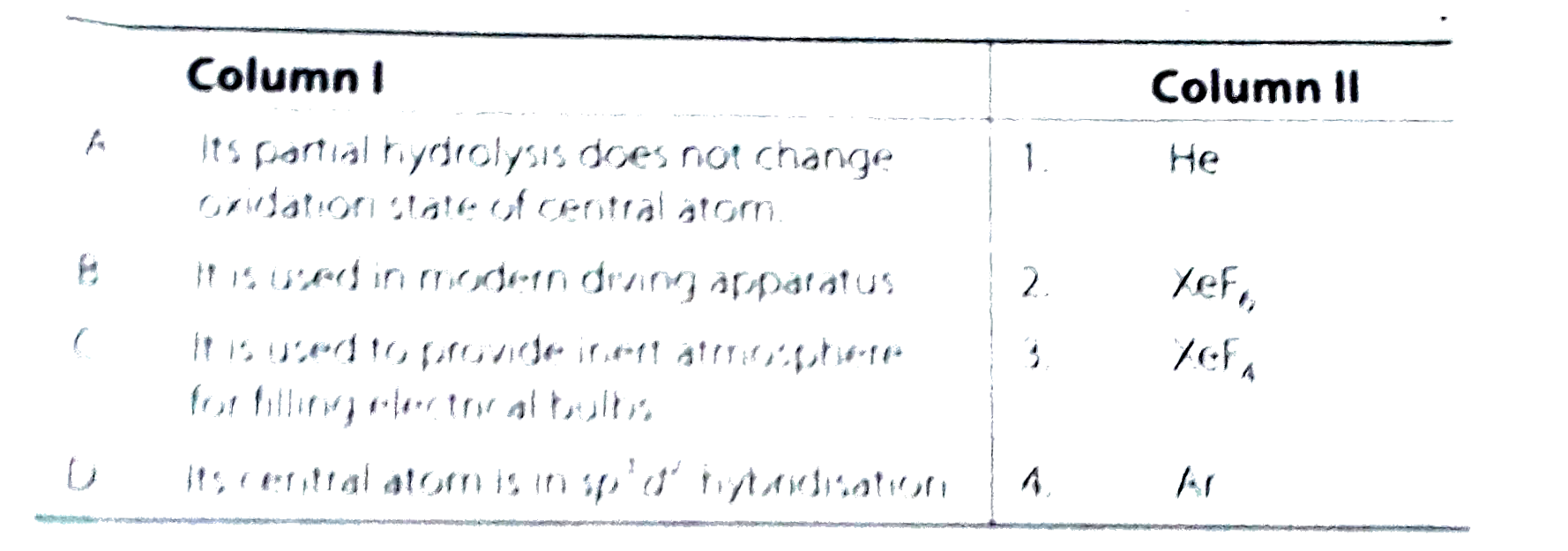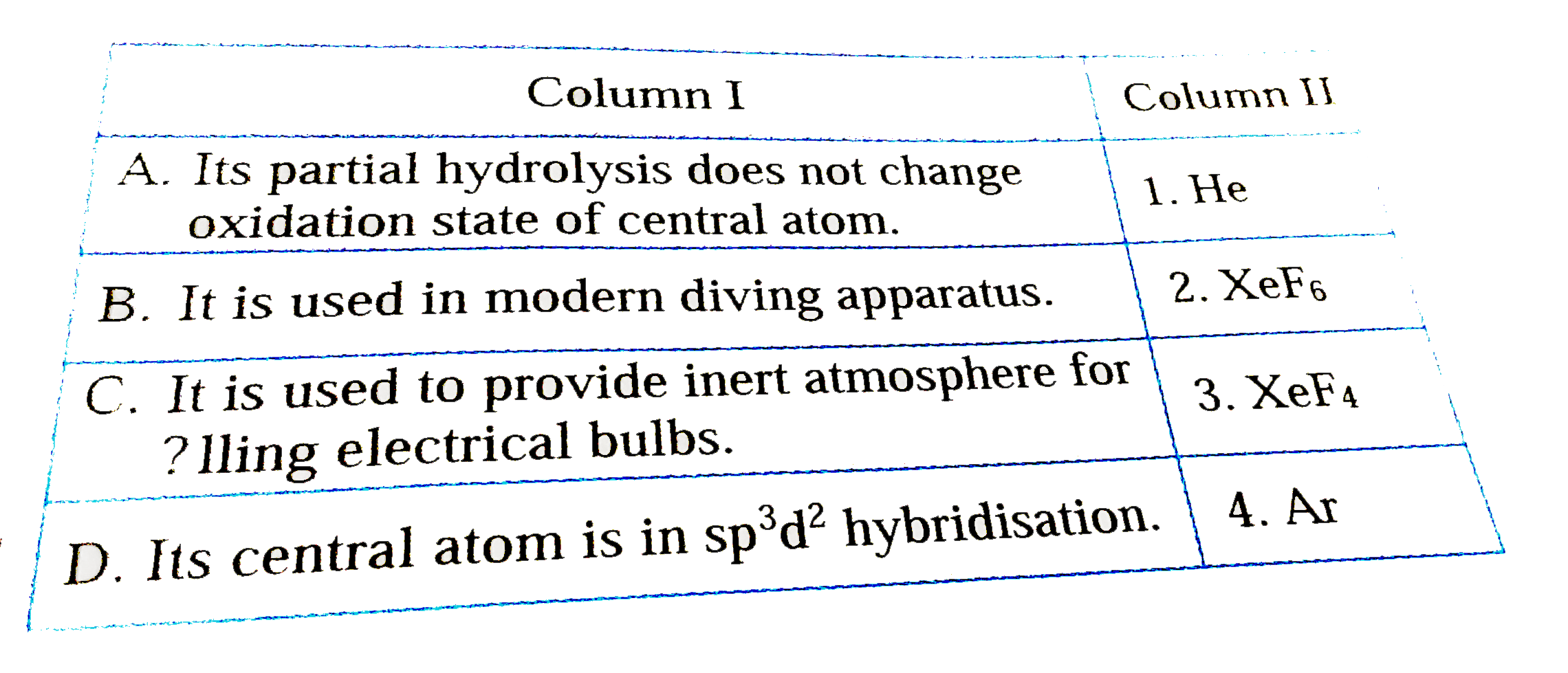Match the following and mark the correct options AnimalRepiratory organEarthworm(i).Moist cuticleAquatic Arthropods(ii).GillsFishes(iii).LungsBirds/Reptiles(iv).Trachea
A-ii, B-I, C-iv, D-iii
A-I, B-iv, C-ii, D-iii
A-I, B-iii, C-ii, D-iv
A-I, B-ii, C-iv, D-iii
The correct Answer is:B
To solve the matching question regarding animals and their respective respiratory organs, we will go through each animal and identify the correct respiratory organ based on biological knowledge.
1. Identify the respiratory organ of Earthworm:
- Earthworms perform respiration through their skin, specifically via a moist cuticle. This process is known as cutaneous respiration.
- Match: Earthworm → (i) Moist cuticle.
2. Identify the respiratory organ of Aquatic Arthropods:
- Aquatic arthropods, such as crabs and shrimp, primarily use gills for respiration. Gills are specialized organs that extract oxygen from water.
- Match: Aquatic Arthropods → (ii) Gills.
3. Identify the respiratory organ of Fishes:
- Fishes also use gills to extract oxygen from water. Gills are adapted to facilitate gas exchange in aquatic environments.
- Match: Fishes → (ii) Gills.
4. Identify the respiratory organ of Birds/Reptiles:
- Birds and reptiles primarily use lungs for respiration. Lungs are adapted for breathing air and are crucial for their survival.
- Match: Birds/Reptiles → (iii) Lungs.
5. Identify the respiratory organ of Insects (Trachea):
- Insects, including many arthropods, use a tracheal system for respiration. This system consists of a network of tubes (tracheae) that deliver oxygen directly to tissues.
- Match: Insects → (iv) Trachea.
Final Matching:
- Earthworm → (i) Moist cuticle
- Aquatic Arthropods → (ii) Gills
- Fishes → (ii) Gills
- Birds/Reptiles → (iii) Lungs
- Insects → (iv) Trachea
Summary of Correct Matches:
- Earthworm: (i) Moist cuticle
- Aquatic Arthropods: (ii) Gills
- Fishes: (ii) Gills
- Birds/Reptiles: (iii) Lungs
- Insects: (iv) Trachea
- Earthworms perform respiration through their skin, specifically via a moist cuticle. This process is known as cutaneous respiration.
- Match: Earthworm → (i) Moist cuticle.
- Aquatic arthropods, such as crabs and shrimp, primarily use gills for respiration. Gills are specialized organs that extract oxygen from water.
- Match: Aquatic Arthropods → (ii) Gills.
- Fishes also use gills to extract oxygen from water. Gills are adapted to facilitate gas exchange in aquatic environments.
- Match: Fishes → (ii) Gills.
- Birds and reptiles primarily use lungs for respiration. Lungs are adapted for breathing air and are crucial for their survival.
- Match: Birds/Reptiles → (iii) Lungs.
- Insects, including many arthropods, use a tracheal system for respiration. This system consists of a network of tubes (tracheae) that deliver oxygen directly to tissues.
- Match: Insects → (iv) Trachea.
- Earthworm → (i) Moist cuticle
- Aquatic Arthropods → (ii) Gills
- Fishes → (ii) Gills
- Birds/Reptiles → (iii) Lungs
- Insects → (iv) Trachea
- Earthworm: (i) Moist cuticle
- Aquatic Arthropods: (ii) Gills
- Fishes: (ii) Gills
- Birds/Reptiles: (iii) Lungs
- Insects: (iv) Trachea
Topper's Solved these Questions
Similar Questions
Knowledge Check
Match the following and mark the correct options AnimalRepiratory organEarthworm(i).Moist cuticleAquatic Arthropods(ii).GillsFishes(iii).LungsBirds/Reptiles(iv).Trachea
AA - ii, B - i, C - iv, D - iiiBA - i, B - iv, C - ii, D - iiiCA - i, B - iii, C - ii, D - ivDA - i, B - ii, C - iv, D - iiiMatch the items of Column I and II and mark the correct option.
 Aa-s, b-r, c-qBa-r, b-s, c-pCa-s, b-r, c-pDa-r, b-s, c-q.
Aa-s, b-r, c-qBa-r, b-s, c-pCa-s, b-r, c-pDa-r, b-s, c-q.Match the items of Column I and II and mark the correct option.
 Aa-s, b-r, c-qBa-r, b-s, c-pCa-s, b-r, c-pDa-r, b-s, c-q.
Aa-s, b-r, c-qBa-r, b-s, c-pCa-s, b-r, c-pDa-r, b-s, c-q.
Match the items of Columns I and II and mark the correct option.

View SolutionMatch the items of Columns I and II and mark the correct option.

View SolutionMatch the columns I,II and III and find correct options

View SolutionMatch the columns I, II and III. Choose the correct option.

View SolutionMatch the following and mark the correct option
Column I Column IIFast muscle fibresi.MyoglobinSlow muscle fibresii.Lactic acidActin filamentiii.Contractile unitSarcomereiv.I-band
View Solution


